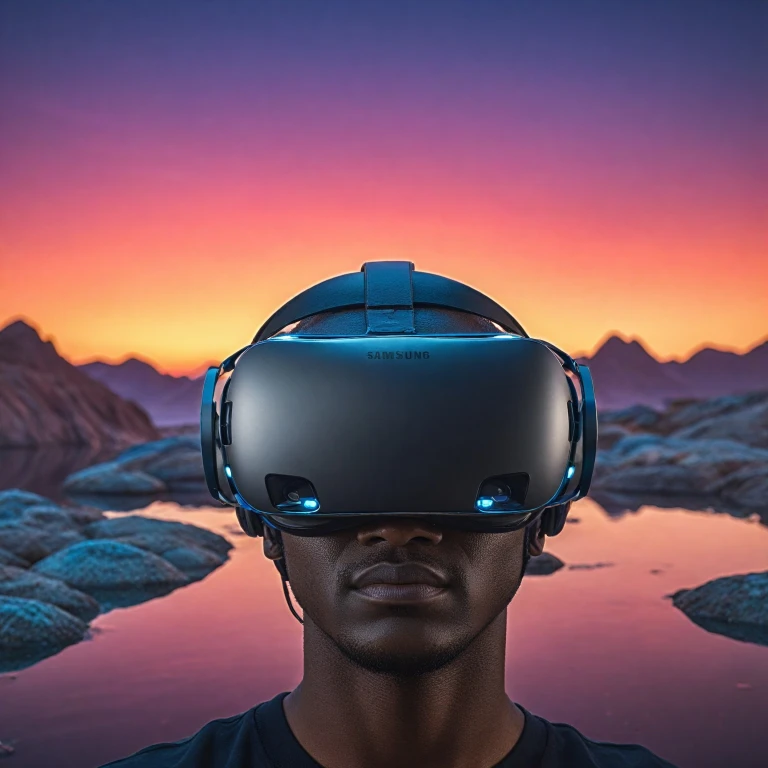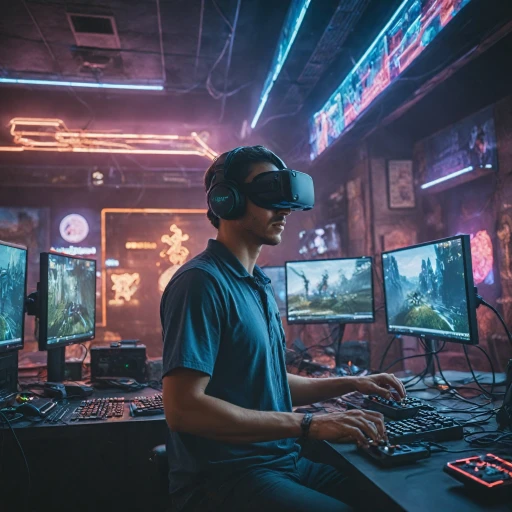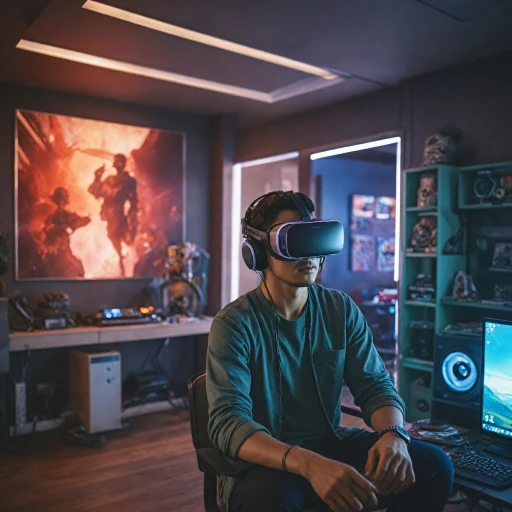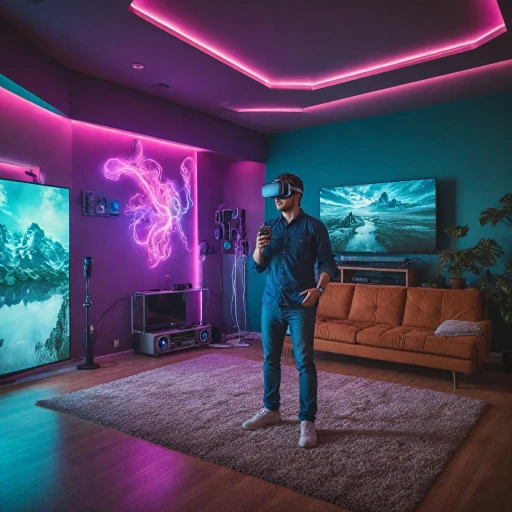
The Current State of Xbox and VR
Where Xbox Currently Stands with VR Technology
The realm of virtual reality (VR) has been expanding rapidly, with numerous platforms like PlayStation VR, Meta Quest, and HTC Vive making significant strides in the gaming industry. However, Microsoft's Xbox has been notably absent from the mainstream VR conversations. As we delve into the current state of Xbox and its VR ventures, it is essential to consider Microsoft's overall approach to gaming and how they have positioned themselves in relation to VR.
Despite having the powerful Xbox Series X and Series S consoles in their arsenal, Microsoft has yet to release a dedicated Xbox headset for virtual reality. Instead, they have focused on enhancing gaming experiences through services like Xbox Game Pass and the integration of cloud gaming. This strategic choice highlights Microsoft's preference to offer a broader selection of games rather than focusing specifically on VR content.
While other companies have plunged into VR, leveraging hardware like the Apple Vision Pro and Meta Quest Pro, Microsoft seems to be carefully evaluating its next move in this niche market. The Xbox team's collaboration with the Microsoft Hololens division might hint at future ventures into augmented reality, but dedicated VR hardware akin to the Meta Quest or HTC Vive remains speculative at best. Even game studios associated with Xbox haven't released titles that require dedicated VR hardware, which reinforces the idea that Microsoft is biding its time before making any decisive VR-related announcements.
Given the unpredictability of the tech world, Microsoft could potentially unveil VR-related developments when they deem it strategically beneficial. As we explore the potential features and challenges of developing an Xbox VR headset, it's vital to remember that Microsoft's current strategies revolve around maximizing their gaming ecosystem's reach without confining themselves to specific technology platforms.
Potential Features of an Xbox VR Headset
The Vision for a New Virtual Reality Experience
As we delve into the potential features of a prospective Xbox VR headset, the vision becomes clearer. Microsoft's ambition could follow the footsteps of other key players like Meta's Quest series and Sony's PlayStation VR offerings. The Xbox may leverage its existing ecosystem, aiming to deliver a full virtual reality (VR) experience that seamlessly integrates with current gaming trends and consumer preferences. The proposed features for an Xbox VR headset might include:- Superior Tracking and Controllers: By potentially adopting excellent tracking capabilities and touch controllers, the Xbox could compete with the best headsets in the market, enhancing the gaming experience significantly.
- Enhanced Display Technology: Improvements in refresh rates and stroke width could provide gamers with a smoother, more immersive fill vision pro experience that could rival the vivid displays of the Apple Vision or HTC Vive.
- Seamless Integration with Xbox Platforms: An Xbox VR headset would likely need to integrate without a hitch into the existing Microsoft ecosystem, potentially offering compatibility with Game Pass services and the Microsoft Store for easy access to a plethora of games.
- Cross-Ecosystem Playability: To stay competitive, the Xbox headset might support broader gaming content, enhancing compatibility across different platforms, possibly akin to Meta Horizon offerings.
Challenges in Developing an Xbox VR Headset
Overcoming Development Hurdles
Developing an Xbox VR headset presents a multitude of challenges, particularly considering the current technological landscape. Microsoft has been a leader in providing virtual reality (VR) experiences through products like the Microsoft Hololens, but moving into the gaming console space introduces a need for alignment with existing systems like the Xbox consoles. Developers need to account for compatibility with Xbox games and ensure that VR integrations do not compromise the current gaming experiences.
The intricate dynamics of hardware and software integration require substantial innovation. Custom controller tracking systems and touch controllers are paramount for achieving seamless interaction, akin to the capabilities seen in devices like the HTC Vive and Meta Quest Pro. These integrations should aim for harmony with the existing Xbox ecosystem, ensuring gamers have access to the best VR experiences without steep learning curves.
In addition to these considerations, the stroke width of user interfaces and the fill cls technology contribute to user experience. A headset must maintain high refresh rates and a low latency environment to avoid motion sickness and deliver the virtual reality immersion users expect. Each of these technical elements plays a crucial role in maintaining the quality standards set by existing products like the Meta Horizon and Apple Vision Pro.
Another challenge lies in the economical and logistical aspects of production and distribution. With the historic examples of consoles like the Turbo Duo showcasing unique gaming experiences, pricing, and market strategy will be crucial for an Xbox VR headset. Products listed on platforms such as the Microsoft Store need to appeal to a broad audience to gain traction in the market.
The development of an Xbox VR headset will not just be a technical endeavor but a strategic play in both game innovation and competitive positioning. Success hinges on balancing pioneering VR capabilities with the demand for diverse gaming experiences, from the PlayStation offerings to the anticipated enhancements from the Meta Quest and other leading headsets.
Impact on the Gaming Ecosystem
The Ripple Effects on Gaming as We Know It
The introduction of an Xbox VR headset has the potential to transform the gaming ecosystem significantly. As the gaming landscape continues to evolve, the integration of virtual reality into the Xbox platform could redefine player experiences and interactions. The entry of a major player like Microsoft into the VR arena could set the stage for increased competition with established VR systems such as the HTC Vive, Meta Quest Pro, and the Sony PlayStation VR. This competition might encourage innovation and drive further advancements in VR technology, enhancing everything from CLS stroke width to the refresh rate of headsets. These technological improvements can elevate the quality of games on the Xbox VR platform. Moreover, an Xbox headset optimized for virtual reality might shape the future of game development itself. Developers would likely craft games that fully leverage VR capabilities, potentially leading to an array of new, immersive gaming experiences unavailable on traditional platforms. Game studios could harness the combined power of Microsoft’s game pass and the headset’s features to deliver exclusive content, attractive enough to coax consumers towards the Xbox VR ecosystem. The Xbox VR headset might also enrich the broader tech landscape by permeating other Microsoft products like the Hololens. As consumers interact with virtual experiences through Xbox, it creates a synergy with Microsoft's existing products and services, expanding the company's influence in both the gaming and tech industry. The addition of VR could invigorate the use of touch controllers, motion tracking, and spatial audio, creating immersive environments that go beyond gaming. As a result, it could foster a crossover of technologies between VR experiences and other Microsoft services, integrating more tightly into the CLS fill meta horizon of digital interaction. Finally, the potential widespread adoption of an Xbox headset for VR could influence consumer expectations and market demand for other devices, such as the anticipated Apple Vision Pro. If successfully adopted, Xbox’s foray into VR might offer valuable insights into consumer preferences that could shape the future of virtual reality headsets, and gaming as a whole, across different platforms.Consumer Expectations and Market Demand
What Gamers Anticipate from Microsoft's Next Move
As discussions evolve around the prospective marriage of Xbox and virtual reality, consumer expectations and market demand play an instrumental role in shaping the future of a potential Xbox VR headset. Gamers are particularly attentive to several features and capabilities that they anticipate from such a device.- Immersive Experience: A primary expectation is the delivery of a truly immersive gaming experience. With competitors like the Meta Quest and HTC Vive setting a high bar for virtual reality engagement, Microsoft enthusiasts expect an enhanced level of interactivity and presence. High refresh rates, effective tracking mechanisms, and cutting-edge visuals are non-negotiable for creating a believable virtual reality environment.
- Integration with Existing Ecosystems: Given Xbox's existing ecosystem, consumers anticipate seamless integration with game pass and existing games. This would ensure a wide array of experiences from the onset, leveraging current titles without necessitating exclusive VR-only developments.
- Compatibility and Usability: The ease of use remains a priority. Gamers expect an Xbox headset to offer compatibility with existing hardware accessories such as controllers. Touch controllers with intuitive feedback, like those offered by the PlayStation VR, are particularly appealing.
- Competitive Pricing: As the market saturates with devices like Meta Horizon and Apple Vision Pro, pricing strategy becomes critical. Consumers will likely seek a balance between affordability and advanced technological features, akin to seeking the best value for an Xbox headset.











